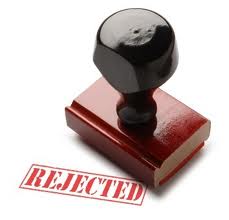by Shannon Milholland, Social Media Director
I long for spring each winter and it's not just the balmy weather I favor. Spring carries American Idol in on its' gentle winds. The show has recently dipped in popularity but I find the current judging panel and talent to be some of the best ever depicted on Idol.
I like American Idol because I witness the blossom of dreams. I even "help" the contestants sing by mouthing the words and contorting my face with emotion - a practice my teenagers enjoy mocking. There's a secondary reason I enjoy the show though. I'm a forty-something mom with kids as young as five. American Idol gives me an opportunity to be exposed to music relevant to my kids.
As I put faces with the names I hear in the news or on my daughter's iPod, my daughters' music becomes less confounding to me.
Today I want to give you a face to go with the name...Facebook. Here are five tips that will make navigating Facebook easier even for a novice:
- Custom URLs - I am amazed how often I see a FB link that looks like this: http://www.facebook.com/This-Is-My-Facebook-Page-Name-And-I-Really-Like-It-Even-Though-Its-Really-Long/01234567890123456789. Am I the only one intimated by a link of this magnitude. Unfortunately you can't alter the name of your page but you can at least 86 all the numbers trailing at the end. Just go to this link and select your name. All of the sudden your FB link looks more like this: facebook.com/I'm-A-Professional-Author
- Know Your Purpose - Why are you on FB? Is it to catch up from old friends from high school and college? Then be personable and share the comings and goings of your life. Is it simply a marketing tool? Then market yourself in a palatable way but know why you're there. For me, I'm there for both reasons. My solution was to keep my personal profile personal and my professional page professional.
- Take Advantage of the Share Button - Most posts have a share button at the bottom. Do you like what you're reading? It only takes a moment to share that post to your personal or professional page. This creates a win-win - you get great content and you make someone else feel great because your shared their post.
- Join a Group (Or Make Your Own) - There is a plethora of Facebook groups. Find one for writers, one about your specialty or your life stage. It will take the vast FB world and make it smaller, more manageable while giving you the opportunity to connect with new people on a heart level.
- Don't Ignore the Numbers - No I'm not talking about the number of your followers. I'm referring to the little red numbers that hover all over your page. Those are there to alert you to activity. Depending on where it's located you might have a new friend request, a new post to your timeline or new activity in a group of which you are a member. Let those numbers help you so you can "catch up" every time you log on.
Still need some help understanding Facebook? Hop on over to the Southern Writers page, my professional page or the Facebook info page and add some additional faces to some names!




































